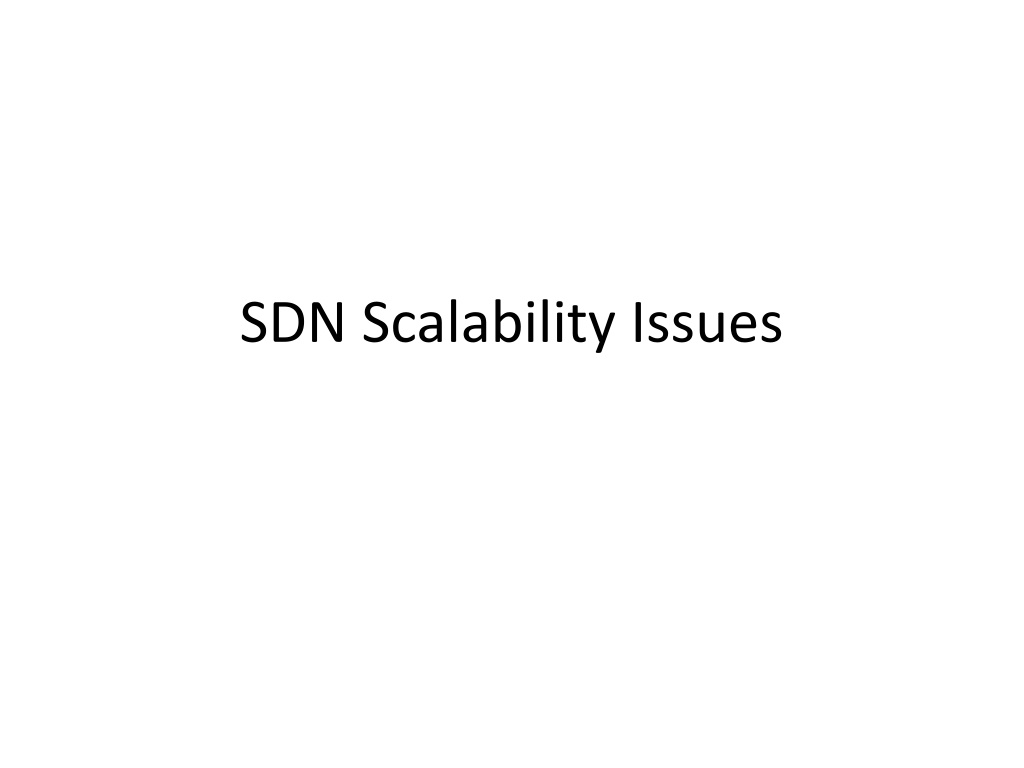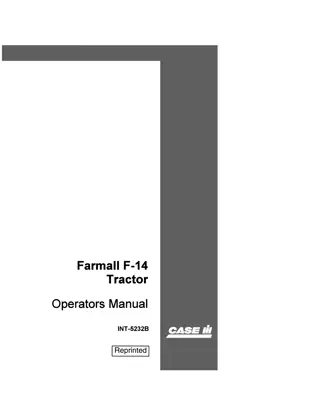
Overcoming SDN Scalability Bottlenecks
Learn about common bottlenecks in SDN ecosystems, including control channel limitations, TCAM memory issues, and controller server constraints. Discover strategies to address these challenges and optimize network performance.
Download Presentation

Please find below an Image/Link to download the presentation.
The content on the website is provided AS IS for your information and personal use only. It may not be sold, licensed, or shared on other websites without obtaining consent from the author. If you encounter any issues during the download, it is possible that the publisher has removed the file from their server.
You are allowed to download the files provided on this website for personal or commercial use, subject to the condition that they are used lawfully. All files are the property of their respective owners.
The content on the website is provided AS IS for your information and personal use only. It may not be sold, licensed, or shared on other websites without obtaining consent from the author.
E N D
Presentation Transcript
Last Class Measuring with SDN What are measurement tasks? What are sketches? What is the minimal building blocks for implementing arbitrary sketches? How do we trade-off between accuracy and space? How to allocate memory across a set of switches to support a given accuracy
Todays Class What are bottlenecks within SDN ecosystem? Hub MacTracker SDN Controller 2 (FloodLight) S1 S2 S4
Bottleneck 1: Control Channel Hub MacTracker SDN Controller 2 (FloodLight) If packets go to controller, they uses TCP connection 13Mbs If packets go to CPU, they uses PCI bus Switch CPU 35Mbs 250GB 250GB TCAM The switch NIC processes packets at 250GB
Bottleneck 2: TCAM Memory Hub MacTracker SDN Controller 2 (FloodLight) If packets go to controller, they uses TCP connection Only stores N flow table entries. Limits number of flow entries 13Mbs If packets go to CPU, they uses PCI bus Switch CPU 35Mbs 250GB 250GB TCAM The switch NIC processes packets at 250GB
Bottleneck 3: Controller Server Runs on a mac: only so much CPU & RAM. Limits Apps Hub MacTracker SDN Controller 2 (FloodLight) If packets go to controller, they uses TCP connection 13Mbs If packets go to CPU, they uses PCI bus Switch CPU 35Mbs 250GB 250GB TCAM The switch NIC processes packets at 250GB
Todays Class What are bottlenecks within SDN ecosystem? Control Channel Controller Server (Scalability) Switch TCAM (Number of entries) Hub MacTracker SDN Controller 2 (FloodLight) S1 S2 S4
How to Get Around TCAM Limitations Use the controller Use a hierarchy of Switches Place servers/applications/VM wisely
How to Get Around TCAM Limitations Use the controller Doesn t Scale --- remember controller has limits Too slow --- takes over 10ms to get info to controller Use a hierarchy of Switches Difane Place servers/applications/VM wisely VM Bin Packing
DiFane Creates a hierarchy of switches Authoritative switches Lots of memory Collectively stores all the rules Local switches Small amount of memory Stores a few rules For unknown rules route traffic to an authoritative switch
Packet Redirection and Rule Caching Authority Switch Ingress Switch Egress Switch First packet Following packets Hit cached rules and forward A slightly longer path in the data plane is faster than going through the control plane 11
Packet Redirection and Rule Caching Authority Switch Ingress Switch To: bruce Egress Switch To: Theo First packet To: bruce Following packets Everything else Hit cached rules and forward 12
Three Sets of Rules in TCAM Type Priority Field 1 Field 2 Action Timeout 210 In ingress switches reactively installed by authority switches 00** 111* Forward to Switch B 10 sec Cache Rules 209 1110 11** Drop 10 sec 110 00** 001* Forward Trigger cache manager Infinity In authority switches Authority Rules 109 proactively installed by controller 0001 0*** Drop, Trigger cache manager 15 In every switch proactively installed by controller 0*** 000* Redirect to auth. switch Partition Rules 14 13
Stage 1 The controller proactively generates the rules and distributes them to authority switches. 14
Partition and Distribute the Flow Rules Flow space accept Distribute partition information Controller AuthoritySwitch B Authority Switch A Authority Switch C reject Authority Switch B Egress Switch Authority Switch A Ingress Switch Authority Switch C 15
Stage 2 The authority switches keeppackets always in the data plane and reactively cache rules. 16
Packet Redirection and Rule Caching Authority Switch Ingress Switch Egress Switch First packet Following packets Hit cached rules and forward A slightly longer path in the data plane is faster than going through the control plane 17
Assumptions That Authoritative switches have more TCAM than regular switches You know all the rules you want to insert into the switches before hand. So your SDN-App you should like Assignment 3 If your SDN-App is like Assignment2 (Hub), all first packets will still need to go to the controller
Interesting Questions What quickly can the authoritative switches install a cache rule into the other switches? How many cache-rules can the authoritative switches generate per second?
How to Get Around TCAM Limitations Use the controller Doesn t Scale --- remember controller has limits Too slow --- takes over 10ms to get info to controller Use a hierarchy of Switches Difane Place servers/applications/VM wisely VM Bin Packing
Distributed Applications Applications have set communication patterns. E.g.3-Tier applications. Insight: traffic is between certain servers If server placed together then their rules are only inserted in one switch
Insight VM A Everyone VM C VM B VM A,B,C talk to only each other If you place together you can limit TCAM usage VM C talks to everyone.
Bin-Packing of VMs 2 VMB VMA
Random Placement of VMs 2 2 2 2 2 VMA VMB
Random Placement Bin-Packing 2 2 2 2 2 2 VMA VMB VMB VMA
Limitations Some applications don t have nice communication patterns How do you learn these patterns? Some applications are too large to fit in one rack --- too spread out.


